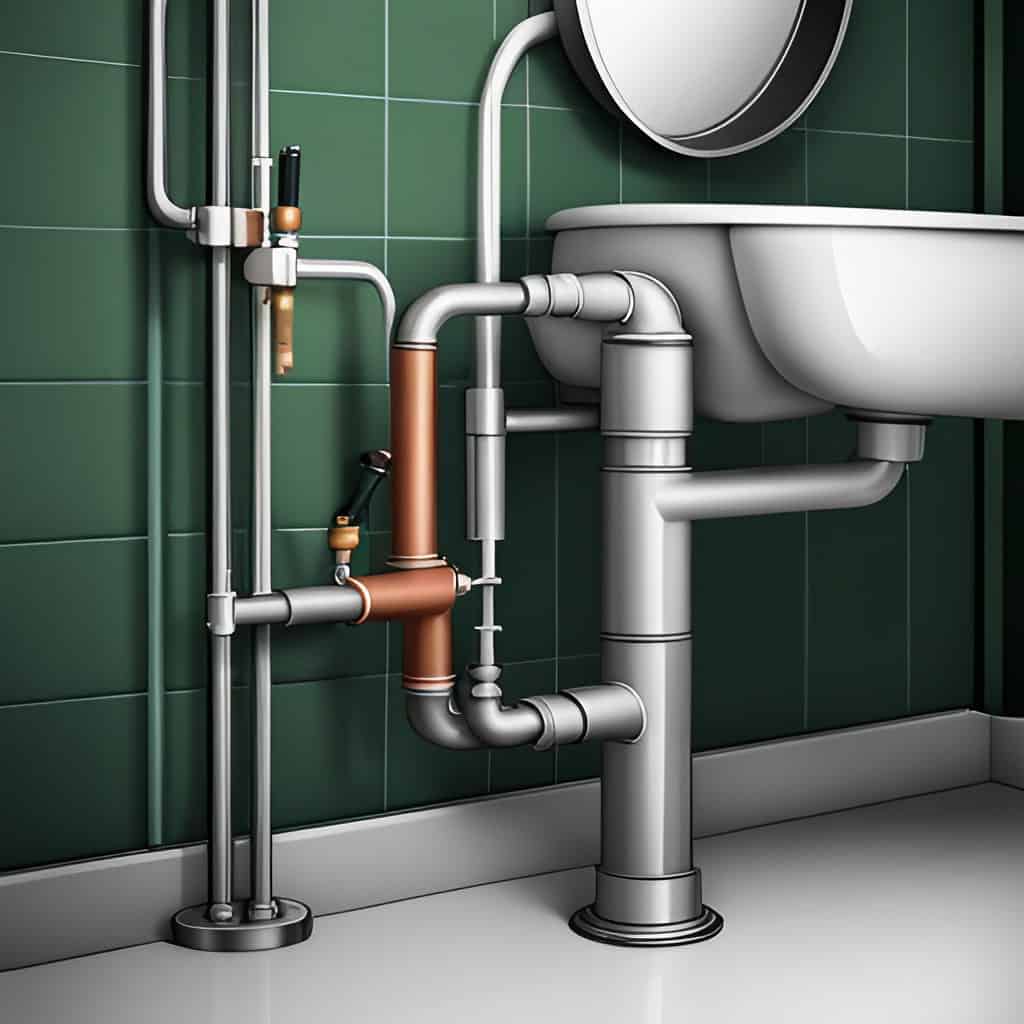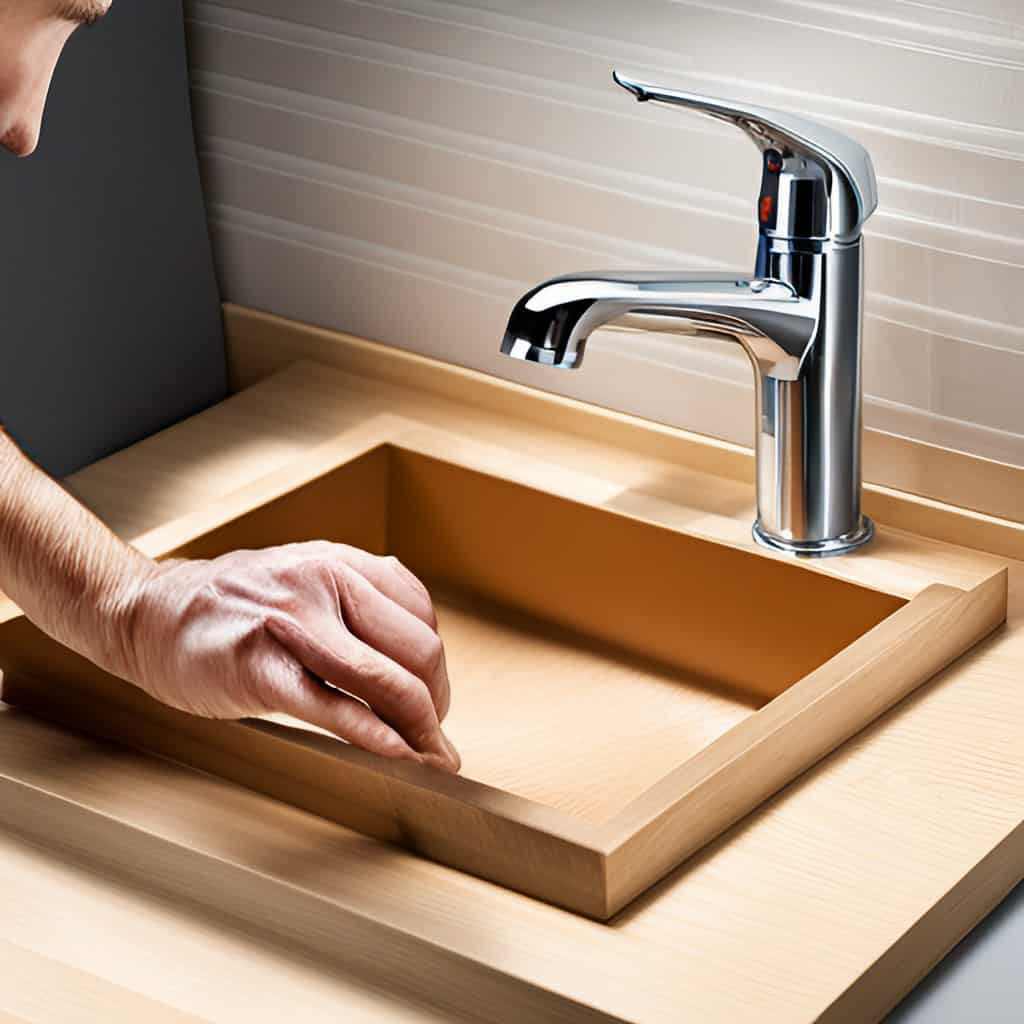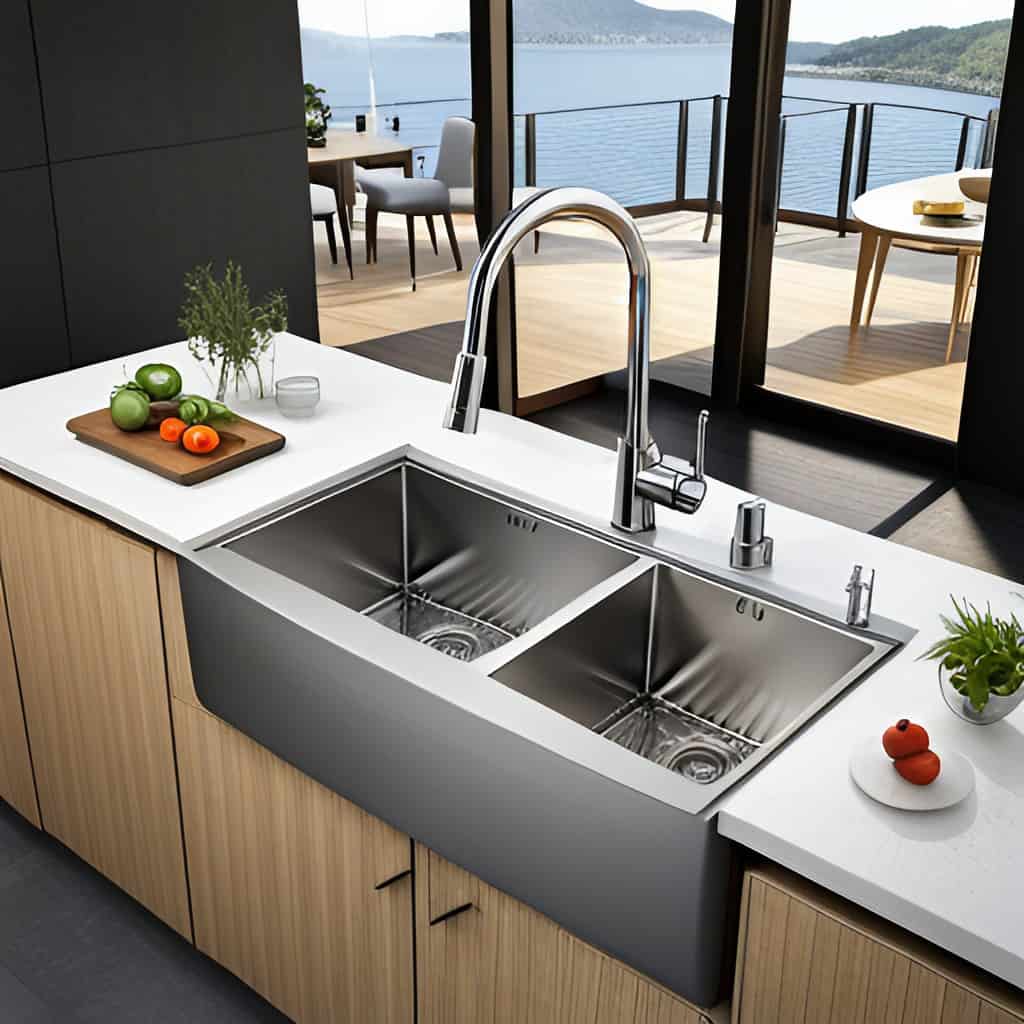How to Replace Kitchen Sink in 2023
Are you tired of your old, worn-out kitchen sink and ready for a fresh upgrade? Replacing your kitchen sink can seem daunting, but fear not! Our comprehensive guide on replacing kitchen sink will walk you through the entire process, from assessing your current sink setup to installing a sparkling new one. Let’s dive in!
Key Takeaways
- Understand the steps involved in replacing a kitchen sink, including evaluating the current setup and selecting the appropriate type.
- Prepare for removal by shutting off the water supply, disconnecting plumbing components & loosening clips/cutting caulk.
- Install the new sink securely with sealant and test for proper function before use.
Understanding the Sink Replacement Process

Before diving into the task, familiarize yourself with the sink replacement process. Whether you’re dealing with a rusty stainless steel sink or an outdated copper sink, replacing a kitchen sink involves several steps, such as:
- Shutting off water supply valves
- Detaching water supply lines and drainpipes
- Loosening sink clips
- Cutting caulk around the sink
The initial step involves evaluating your current sink setup and selecting the most suitable sink type for your kitchen. This will ensure a seamless transition from your old sink to the new one without compatibility issues or plumbing headaches.
Assessing Your Current Sink Setup
The initial phase of replacing a kitchen sink is examining your existing setup. This includes checking plumbing connections, mounting style, and compatibility with your desired new sink. Start by noting down the measurements of your existing sink, the number of faucet holes, and the type of mounting brackets used.
Next, it’s time to remove the old caulk. Here’s how:
- After removing the sink, use a putty knife to scrape off the caulk or plumber’s putty.
- If the caulk proves stubborn, apply a caulk remover and let it sit for a couple of hours before scraping off the softened caulk.
- Finish by cleaning the surface with rubbing alcohol or nail polish remover, followed by a sponge and water.
Choosing the Right Sink Type
After evaluating your current sink setup, the next step is selecting an appropriate sink type for your kitchen. Size, material, and mounting style will influence your decision. When choosing a new sink, ensuring it is compatible with your current faucet and drain system is essential. Consider possible installation issues before making your decision. A drop-in kitchen sink is an excellent choice for a straightforward installation, suitable for most countertop surfaces.
If your disposer drainpipe is not set at the ideal height, you may want to look into an undermount sink with different depth bowls. This could provide an alternate solution for your installation issue. Before removing the existing sink, measure the opening from underneath and all four sides, as the cutout may not be square. By gauging the sink opening, you guarantee that the sink is compatible with the pre-cut hole in the countertop.
Preparing for Sink Removal

Once you’ve chosen the suitable sink type, the next move is to prepare for the sink’s removal. This involves shutting off the water supply and disconnecting any appliances connected to your sink, such as the garbage disposal and dishwasher.
Before taking out your current sink, it’s necessary to disconnect the plumbing elements, particularly the cold water supply lines. To prevent any mess while disconnecting the water supply lines and pipes, place buckets beneath them to catch any remaining water.
Shutting Off Water Supply
To shut off the water supply to your kitchen sink, follow these steps:
- Locate the shutoff valves.
- Turn the valves clockwise until fully closed for knobs or perpendicular to the pipe for levers.
- Before disconnecting the water supply lines, shut off the shutoff valves.
- Test for leaks before proceeding.
The shutoff valves under the sink need to be functioning. If not, you should turn off the water supply to the entire house before replacing the sink. Keep a bucket handy during this process to catch any residual water from the lines and pipes.
Removing Garbage Disposal and Dishwasher Connections
D disconnecting the garbage disposal and dishwasher connections before removing your old sink is essential. Ensure you turn off the power supply and unplug the garbage disposal unit before attempting to remove it.
To disconnect the dishwasher drain hose, remove it from the garbage disposal or sink drain. Place a bucket beneath the waste pipe to catch any water or debris that may spill during this process.
Removing the Old Kitchen Sink

You can remove the old kitchen sink once all the plumbing components are disconnected. Start by detaching drain pipes and p-trap, loosening sink clips, and cutting caulk around the sink.
Finally, carefully lift out the old sink and clean the countertop surface to prepare for the new sink installation.
Detaching Drain Pipes and P-Trap

Detaching the drain pipe and p-trap is a prerequisite before removing the sink. Use a wrench to loosen the nuts connecting them, gently extract the drain pipes and p-trap, and set them aside. Position a bucket beneath the sink to capture residual water during this process. Don’t forget to remove the drain filter as well.
Remember to shut off the water supply before disconnecting the drain pipes and water lines, as mentioned in section 2.1 on shutting off the water supply.
Loosening Sink Clips and Cutting Caulk
Loosening the sink clips and cutting the caulk around the sink is necessary to ease removal. Here’s how to do it:
- Locate the sink clips underneath the sink, typically near the edges.
- Use a flathead screwdriver to loosen the sink clips.
- For cutting caulk around the sink, use a utility knife.
- Exercise caution to avoid damaging the countertop.
Once the clips are loosened and caulk cut, you can safely remove the old sink, as discussed in section 3.3 on lifting out the old sink.
Lifting Out the Old Sink
Once the sink clips are loosened, and the caulk is cut, you can carefully lift the old sink from the countertop and place it aside. Clean the countertop surface thoroughly to ensure a smooth and secure installation of your new sink. This step is crucial to guarantee your new sink’s proper seal and fit.
Installing the New Kitchen Sink

You can install the new kitchen sink with the old sink removed and the countertop surface cleaned. This process involves positioning and sealing the sink, securing it with clips or brackets, and reconnecting plumbing components.
Follow the steps outlined in sections 4.1 to 4.3 to ensure a seamless and successful installation of your new sink, allowing you to enjoy the benefits of your upgraded kitchen component.
Positioning and Sealing the Sink

Start by placing the new sink on the countertop at the desired location. To create a watertight seal, apply a water-resistant silicone caulk around the sink’s perimeter. This sealant will prevent water from seeping under the sink and causing damage to the countertop and sink cabinet.
Once the sink is positioned and sealed, you can move on to securing it in place using clips or brackets, as discussed in section 4.2.
Securing Sink with Clips or Brackets
Secure the sink in its place by adhering to the manufacturer’s instructions, using either clips or brackets. A bar clamp can be utilized during sink installation to ensure the sink is level on all sides. Tightening the bar clamp will firmly affix the sink in place.
After securing the sink, wipe away any remaining caulk to ensure a clean and polished finish. Now, you’re ready to reconnect the plumbing components covered in section 4.3.
Reconnecting Plumbing Components
You can reconnect the plumbing components once the new sink is securely installed. Reattach the sink’s water supply lines, drain pipes, and appliance connections. Use a wrench to tighten the connections, ensuring not to pull over.
Once the plumbing components are reconnected, turn on the water supply valves and inspect for leaks, as discussed in section 6 on testing your new sink.
Testing Your New Sink

After your new sink is installed and connected, testing its functionality is important. Here’s how:
- Fill both sides of the sink with water.
- Check for any leakage at each pipe joint.
- If you identify any leaks, tighten the connections to resolve the issue.
Your new sink is now ready for use! Enjoy the benefits of your upgraded kitchen component and the satisfaction of a successful DIY project, replacing your old stainless steel sink.

Summary
In summary, the process of replacing a kitchen sink includes:
- Evaluating your existing sink setup
- Selecting a suitable sink type
- Preparing for the removal of the sink
- Disconnecting drain pipes and p-trap
- Loosening sink clips
- Cutting caulk
- Removing the old sink
Once the old sink is removed, install the new sink by positioning and sealing it, securing it with clips or brackets, and reconnecting plumbing components. Finally, test your new sink for proper function and address any leaks if necessary.
Frequently Asked Questions
How much does it cost to replace a kitchen sink?
The cost of replacing a kitchen sink depends on factors such as the sink itself, the time required for removal, and the time of day or week when the work is conducted.
How long does it take to replace a kitchen sink?
Replacing a standard-sized kitchen sink (80cm x 55cm x 20cm) is estimated to take 1.5-2 hours.
What potential issues should I consider when replacing a kitchen sink?
Potential issues to consider include plumbing and installation challenges that may arise during the process. Here’s some more information on the potential risks.
What type of sealant should I use for the sink installation?
Silicone caulk is recommended for sink installation, as it is water-resistant.
How do I test my new kitchen sink for proper function?
Fill both sides of the sink with water and check for any leakage at each pipe joint. If any leaks are identified, tighten the connections to resolve the issue.

